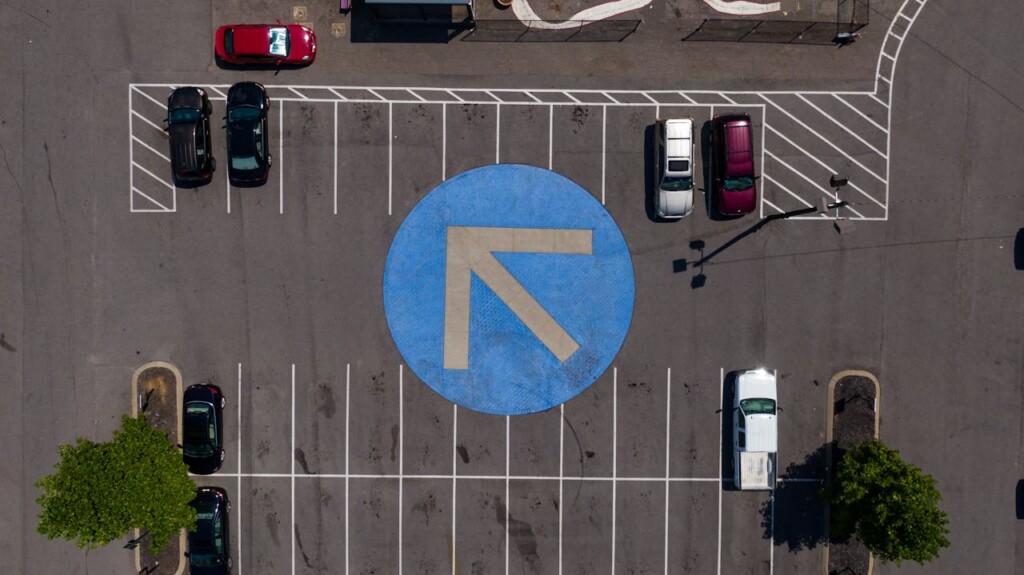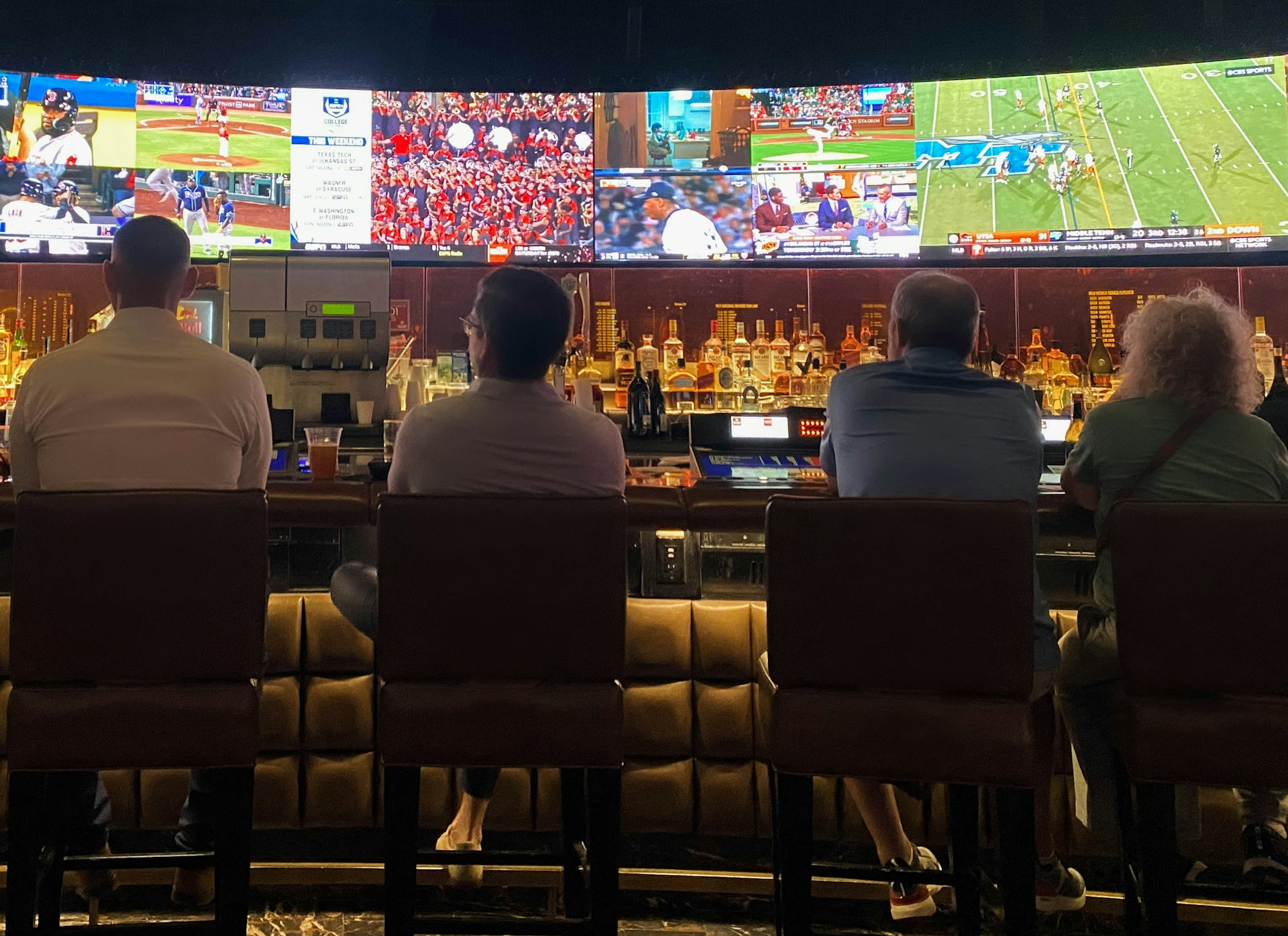More than one in four adults in the United States has some form of disability, making restaurant accessibility a fundamental business requirement rather than an optional consideration. In San Antonio, we see restaurants navigating two layers of accessibility standards that determine how effectively they serve all patrons.
Restaurants in San Antonio must meet ADA Title III requirements alongside Texas Accessibility Standards administered by TDLR. This dual compliance framework covers everything from accessible approach routes to restroom specifications, with local ordinances potentially adding stricter requirements than federal minimums.
How Do You Verify Site Arrival, Parking, And Entrance Access?

Verifying site arrival and entrance access requires systematic inspection of the pathway from the moment someone reaches your property to when they enter the building. We start by confirming that accessible routes exist from all arrival points including parking areas, passenger loading zones, public sidewalks, and transit stops.
Accessible Route Requirements
An accessible route must connect all arrival points to at least one accessible entrance without requiring the use of stairs. This route forms the foundation for compliance and must maintain specific standards throughout its length.
The route needs surfaces that are stable, firm, and slip-resistant. Width requirements call for at least 36 inches of clear space, though we can narrow this to 32 inches for maximum stretches of 24 inches if narrower sections are positioned at least 48 inches apart.
Parking Space Calculations And Dimensions
Parking requirements follow a specific scoping table based on total spaces provided. Properties with 1-25 total spaces need one accessible space, 26-50 spaces require two accessible spaces, 51-75 need three, and 76-100 require four accessible spaces. Beyond 100 spaces, consult the full ADA scoping requirements for exact counts.
For every six accessible spaces required, at least one must be van accessible. Standard accessible parking spaces measure at least 8 feet wide with an access aisle of at least 5 feet. Van accessible spaces can be configured as 11 feet wide with a 5-foot aisle, or 8 feet wide with an 8-foot aisle.
All parking spaces and access aisles must have slopes no steeper than 1:48 in all directions. Van spaces require vertical clearance of at least 98 inches for the parking space, access aisle, and vehicular route. Access aisles need marking to discourage parking within them and must connect directly to an accessible route.
Signage Requirements
Accessible parking spaces require signs displaying the International Symbol of Accessibility mounted so the bottom edge sits at least 60 inches above ground level. Van accessible spaces need additional signage stating “van accessible” along with the accessibility symbol.
When not all entrances are accessible, post directional signage at inaccessible entrances indicating the location of the nearest accessible entrance. This requirement stems from Title III obligations to remove architectural barriers when readily achievable.
Curb Ramp Specifications
Where accessible routes cross curbs, curb ramps become mandatory. Running slopes cannot exceed 1:12, meaning for every inch of height change, provide at least 12 inches of ramp run. Cross slopes must stay at or below 1:48.
Curb ramps need clear widths of at least 36 inches. The top landing must be level and measure at least 36 inches in length. When flares are present, their slopes must follow ADA standards for safe navigation.
Door And Entrance Clearances
Entrance doors require clear opening widths of at least 32 inches when measured between the face of the door and the stop at 90 degrees open. Pull-side maneuvering clearance typically demands 18 inches beyond the latch side plus 60 inches of clear depth, though specific configurations may vary based on approach direction.
Door hardware must be operable with one hand without requiring tight grasping, pinching, or twisting of the wrist. Mount hardware between 34 and 48 inches above the floor. Door closers need adjustment to allow at least 5 seconds for closing from 90 degrees to 12 degrees from the latch.
Thresholds follow specific height limitations with allowable beveled configurations depending on installation date relative to ADA Standards. In vestibule configurations, provide at least 48 inches plus door width between doors. Floor mats cannot exceed 1/2 inch thickness and require secure attachment along edges.
What Dining, Seating, Counter, And Service Line Features Are Required?
Restaurant dining areas present unique accessibility challenges that we address through systematic application of both ADA standards and Texas Accessibility Standards. The proper configuration of tables, counters, and service lines directly impacts patron access and operational efficiency.
Fixed Table Requirements And Distribution
Fixed tables require at least 5% accessibility compliance, with a minimum of one accessible table regardless of total count. We ensure accessible tables are distributed throughout all dining spaces rather than clustered in a single area.
Access aisles between table edges or walls must maintain 36 inches clear width according to TAS sections 5.1 and 5.3. This measurement applies to both the primary route and secondary pathways that connect accessible seating to other facility areas.
Dining Surface Specifications
Dining surfaces must meet precise dimensional requirements under ADA sections 226 and 902. Table height ranges from 28 to 34 inches measured from the finished floor to the table surface.
Each accessible dining surface requires a 30-inch by 48-inch clear floor space positioned for forward approach. Knee clearance extends 27 inches high with depth measuring between 17 and 25 inches under the surface. The accessible route leading to seating maintains a minimum 36-inch width to accommodate wheelchair maneuvering.
Counter And Bar Access Standards
Service counters exceeding 34 inches in height for standing or stool use must provide a 60-inch minimum compliant portion or offer equivalent service at accessible tables within the same area per TAS section 5.2. This alternative approach allows restaurants flexibility while maintaining equal access.
Sales and service counters follow ADA section 904 requirements. At least one portion of each counter type must measure 36 inches high maximum and 36 inches long minimum. The 30-inch by 48-inch clear floor space accommodates forward approach, with 27-inch knee clearance and 17 to 25-inch depth beneath the counter surface.
Food Service Line Configuration
Food service lines maintain minimum clear width of 36 inches, though we recommend 42 inches to allow comfortable passing around wheelchair users. Tray slides cannot exceed 34 inches in height, matching accessible counter requirements.
Self-service shelves require at least 50% of each shelf type within acceptable reach ranges. Tableware and condiment dispensing devices must meet operability criteria outlined in TAS sections 5.5 and 5.6, plus ADA section 904.5.1. These devices should operate with one hand without requiring tight grasping, pinching, or wrist twisting.
Specialized Seating Areas
New construction requires all dining areas to be accessible, including raised, sunken, and outdoor spaces. Mezzanine seating presents an exception where vertical access is not required only when three specific conditions are met: limited mezzanine area, equivalent accommodations and services provided in accessible areas, and no restrictions on accessible area use per TAS section 5.4.
Check-out aisles, when present, must post accessibility signage at a minimum of one accessible aisle location. This ensures patrons can easily identify and access compliant service areas without assistance.
How Should Interior Circulation And Restrooms Be Designed And Checked?

Interior circulation systems form the backbone of accessible design once patrons enter your restaurant. We plan these pathways to connect all public areas with proper clearances and surfaces that accommodate mobility aids and varying physical abilities. The circulation network includes horizontal routes, vertical access points, and restroom facilities that must meet specific dimensional and operational standards.
Interior Route Requirements
Primary circulation paths require stable, firm, and slip-resistant surfaces throughout the facility. We design routes with a minimum width of 36 inches to accommodate wheelchair passage and ensure passing spaces of 60 inches by 60 inches every 200 feet when routes are less than 60 inches wide. Running slopes cannot exceed 1:20 (steeper slopes require ramp features), while cross slopes must stay at or below 1:48 to prevent mobility aids from veering off course.
Protruding objects present significant hazards when they extend more than 4 inches into circulation paths. We address this by ensuring objects with bottom edges between 27 inches and 80 inches above the floor stay within the 4-inch projection limit. Objects below 27 inches or above 80 inches can extend further since they fall outside the typical detection range for people with vision impairments.
Ramp Design Standards
When interior routes exceed 1:20 slope, we treat them as ramps requiring additional safety features. Ramp width must be at least 36 inches with running slopes no steeper than 1:12. Level landings at the top and bottom must extend at least 60 inches, while turning landings need 60 inches by 60 inches to provide adequate maneuvering space.
For ramps with rises exceeding 6 inches, we install handrails on both sides mounted 34 to 38 inches high with proper extensions. Edge protection prevents wheelchair casters and mobility aid tips from slipping off the ramp surface. These features work together to create safe vertical transitions within the restaurant space.
Vertical Access Solutions
Elevators or platform lifts provide vertical access to public stories unless building size exceptions apply. We ensure lifts operate independently without requiring assistance and include accessible controls mounted 15 to 48 inches high. Clear floor spaces within lift platforms accommodate wheelchair users and mobility device maneuvering during operation.
Lift installations must consider approach clearances and door operation sequences. Controls need tactile identification and proper contrast for users with visual impairments, while emergency communication systems provide safety backup when mechanical issues occur.
Restroom Access And Signage
Accessible routes to restrooms cannot include stairs or barriers that prevent independent access. We mount tactile signage with raised characters and Braille so the baseline of the lowest character sits at least 48 inches above the floor and the highest character stays below 60 inches. This positioning ensures consistent tactile reading for people of varying heights.
Directional signs guide users to accessible restrooms when inaccessible facilities exist elsewhere in the building. These signs must include the International Symbol of Accessibility and clear directional information to prevent confusion or dead-end navigation paths.
Door Operation Standards
Interior doors require clear openings of at least 32 inches when fully opened. Maneuvering clearances vary by approach direction but typically need 18 inches beyond the latch side plus 60 inches of clear depth for pull-side approaches. Door thresholds must meet beveled height limits to prevent tripping hazards while maintaining weather sealing when necessary.
Hardware operates with one hand without tight grasping, pinching, or twisting motions, mounted between 34 and 48 inches high. Door closers take at least 5 seconds to move from 90 degrees to 12 degrees from the latch, providing adequate passage time for users with mobility limitations.
Restroom Layout Requirements
Restroom turning space accommodates either a 60-inch diameter circle or T-shaped configuration within a 60-inch square. We maintain 36-inch minimum paths to all fixtures and ensure 30 inches by 48 inches of clear floor space beyond door swing areas in single-user facilities. This prevents doors from blocking access to essential fixtures during use.
Lavatory installations require forward approach spaces of 30 inches by 48 inches with tops no higher than 34 inches. Knee clearance extends at least 27 inches high and 8 inches deep under the fixture, while toe clearance provides 9 inches of height. We protect exposed pipes to prevent contact burns and install operable faucets requiring 5 pounds force or less without complex hand movements.
Fixture Placement And Hardware
Dispensers, mirrors, and coat hooks follow reach range principles with most items mounted 48 inches high maximum, reduced to 44 inches over deeper counters. Mirror bottom edges stay at 40 inches or lower when mounted above lavatories, dropping to 35 inches for standalone installations. Coat hooks operate within the 15 to 48-inch range for universal access.
Water closet centerlines position 16 to 18 inches from side walls with clearance areas measuring at least 60 inches wide and 56 inches deep for wall-hung units (59 inches for floor-mounted models). Seat heights range from 17 to 19 inches above the floor. Side grab bars extend 42 inches long with specific placement requirements, while rear grab bars measure 36 inches with proper offset distances from walls and centerlines.
Flush controls mount on the open side of water closets, no higher than 48 inches, and operate with single-hand pressure of 5 pounds maximum. Toilet paper dispensers position 7 to 9 inches from the bowl front to the dispenser centerline, mounted 15 to 48 inches high for convenient access. Toilet compartments meet width and depth requirements with self-closing doors and accessible hardware that supports independent operation.
What Policies And Ongoing Steps Help San Antonio Restaurants Stay Compliant?
Title III mandates four operational requirements that we integrate into daily restaurant management. These include effective communication through auxiliary aids when needed, reasonable policy modifications that accommodate guests with disabilities, welcoming service animals as required by federal law, and barrier removal when readily achievable. We approach these as standard operating procedures rather than special accommodations.
Policy modifications often involve simple adjustments like allowing service animals in all dining areas or providing alternative ways to communicate menu information. Staff training on these policies prevents compliance issues before they arise. Documentation of policy changes and staff acknowledgment creates a clear record for regulatory reviews.
New construction and major alterations in San Antonio restaurants must comply with both the 2010 ADA Standards and Texas Accessibility Standards administered by TDLR. We coordinate with local building officials to verify that San Antonio ordinances may require additional accessibility features beyond federal minimums. This dual compliance approach prevents costly revisions during permit reviews.
The four-priority audit system provides a structured approach to accessibility assessments. Priority one addresses approach and entrance access including parking and door clearances. Priority two covers access to goods and services such as dining surfaces and service counters. Priority three focuses on public toilet room accessibility. Priority four includes remaining features like drinking fountains and telephones.
Regular accessibility reviews become manageable when scheduled as part of routine maintenance cycles. We document measurements with photos and dates to track compliance over time. Posted directional signage to accessible entrances and restrooms helps guests locate accommodations quickly while meeting federal requirements for facilities where not all entrances are accessible.
Multi-level restaurant spaces require careful planning for vertical access through elevators or lifts where required by building size and occupancy. When exceptions apply for smaller facilities, we ensure equivalent accommodations and services are available on accessible levels. This planning prevents guest service interruptions and maintains compliance with accessibility requirements.
Technical assistance resources provide ongoing support for compliance questions. The ADA Information Line at ADA.gov offers guidance on federal requirements. The ADA National Network provides regional expertise for specific situations. The U.S. Access Board delivers technical specifications and clarifications on construction standards. These resources help resolve compliance questions before they become violations.
Conclusion And Next Steps

Restaurant ADA compliance in San Antonio requires a coordinated approach that balances federal ADA Title III requirements with Texas Accessibility Standards and any local municipal regulations that may exceed national minimums. We focus our compliance efforts on the four established priority areas: accessible approach and entrance, access to goods and services, public toilet room accessibility, and additional features like drinking fountains. This systematic approach ensures that we address the most critical accessibility needs first while building toward comprehensive compliance throughout the facility.
Regular documentation and measurement verification form the backbone of sustainable accessibility maintenance. We integrate accessibility assessments into both renovation planning and routine facility maintenance schedules, treating compliance as an ongoing operational requirement rather than a one-time project. Federal resources like the ADA Information Line, ADA National Network, and U.S. Access Board provide essential technical guidance, while keeping current with signage requirements, policy updates, and staff training ensures that our accessible dining surfaces, restroom facilities, and entrance approaches continue serving all patrons effectively.
Ready to ensure your restaurant meets all accessibility requirements? Contact EB3 Construction to schedule a comprehensive ADA compliance walkthrough and develop a customized improvement plan for your San Antonio restaurant.




